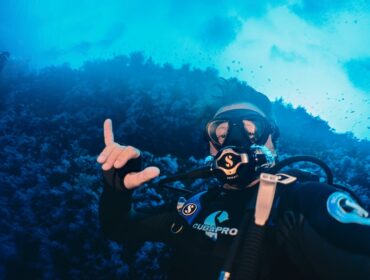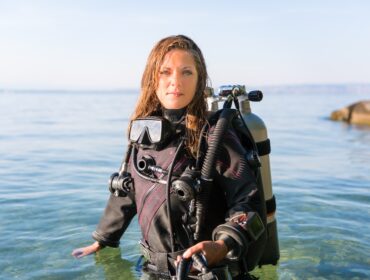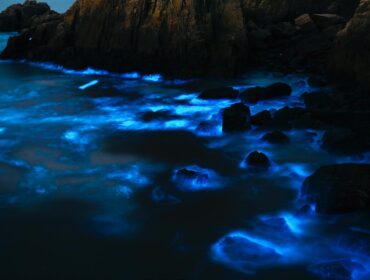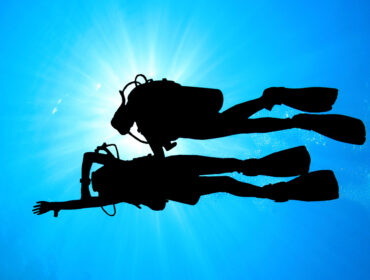Getting separated from your buddy during a dive can be a frightening and disorienting experience. One of the buddy system’s basic rules is knowing exactly what to do in case this scenario occurs.
Divers who follow the buddy system do so in the belief that diving with another diver can lessen the chances of scuba dive accidents. Nevertheless, there will be instances when you will be separated from your buddy, no matter how careful you are or how much experience you have.
The following factors may lead to dive buddy separation:
- Poor visibility
- Equipment problems or malfunctions
- Distractions
- Strong currents and other dangerous scenarios
- Miscommunication
Losing sight of your buddy can cause serious anxiety. After all, being underwater alone without the ability to talk can be very frightening. Fortunately, adopting a proper dive buddy separation procedure can minimize the dangers and help you reunite with your scuba buddy below or above the water’s surface.
What Should You and Your Buddy Do if Separated During a Dive?
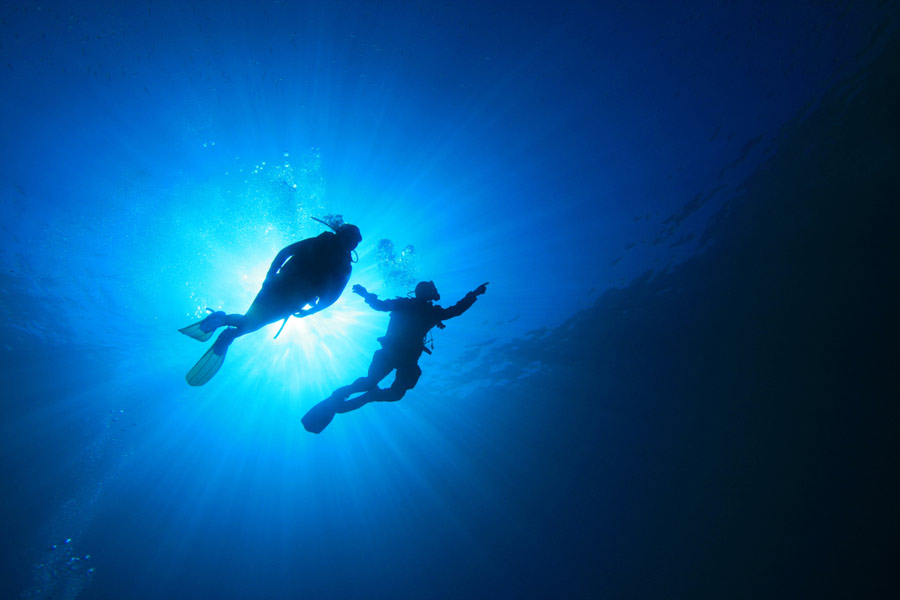
Discuss the following in your contingency planning:
- Before the dive, remember to arm your and your buddy’s buoyancy compensators (BCDs) with the essential emergency gear.
- During the dive, stay as close to your dive buddy as possible. Also, go over the scuba hand signals you’ll be using and pay attention to the hand signals for aborting dives and signaling distress.
- If you get separated from your dive buddy, stop and do a slow visual 360-degree spin, remembering to look both upwards and downwards. Try spotting your buddy’s bubbles, if possible.
- If you carry a tank banger or similar audio buddy signaling device, use it to see if your buddy can locate you from the sound.
- If you have a dive light on you and visibility is low, use the light while doing your slow 360-degree spin to help your buddy locate you. The light can also grab your buddy’s attention, who could be behind a terrain feature or outcrop.
- Having spent a minute looking for your buddy, ascend slowly to the surface while remembering to perform your safety stop (generally done at a depth of 15 feet).
- While at your safety stop, deploy your surface marker buoy (SMB) or safety sausage so that your buddy can easily spot you if he is searching for you at the surface. Perform another 360-degree spin, looking in all directions for signs of your missing buddy.
- At the surface, wait for your buddy to emerge while continuing to look for the air bubbles. If you were on a boat dive, return to the boat and inform the crew that you’re missing a buddy.
- Do not re-descend once you have surfaced.
- Your missing buddy should agree to carry out the same dive buddy separation procedure and agree to meet you at or near the surface.
Is there a Standard Buddy Dive Separation Procedure?

Unfortunately, no standardized buddy dive separation procedure is taught by the certification agencies. No certification agencies specify whether you should perform the mandatory safety stop or skip it if your buddy goes missing. If you cannot reunite with a missing buddy, the primary thing to remember here is that your safety is always paramount, and locating your buddy shouldn’t require you to put yourself at risk.
On the other hand, if you are confident that your buddy is in an emergency or have seen your buddy perform an emergency ascent, then the procedures for emergency ascent apply, and the rescue of a fellow diver should take precedence over a safety stop. This should be okay if you are within NDL (no decompression limits).
Having an SMB deployed while performing your stop should help inform your buddy, who may already be at the surface, that you are okay. This will also give him/her an idea of your position while you complete your safety stop.
Follow these safety procedures, and you’ll be on your way to becoming a responsible dive buddy!


